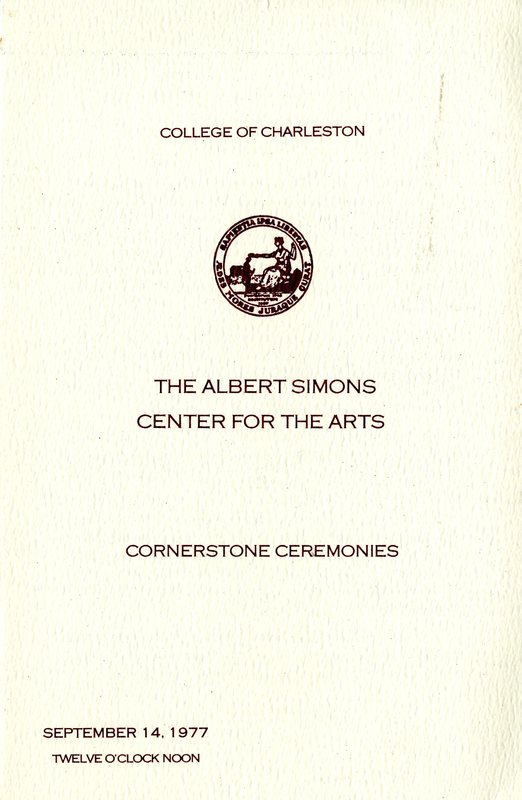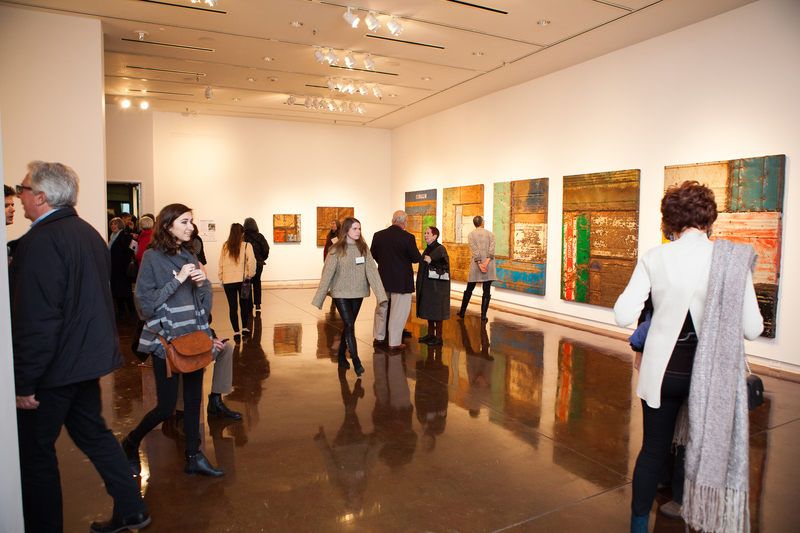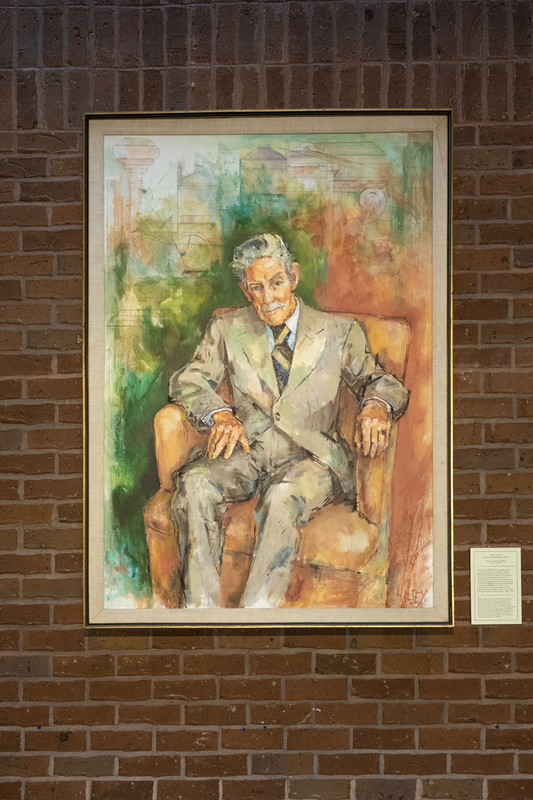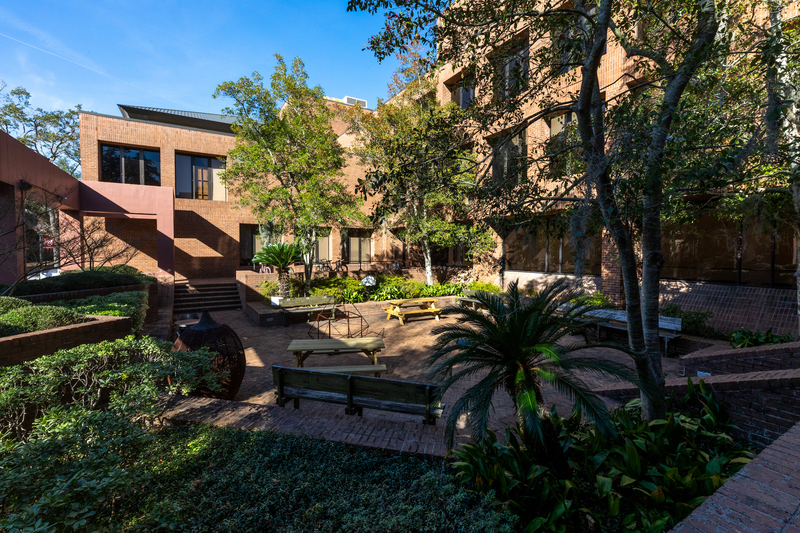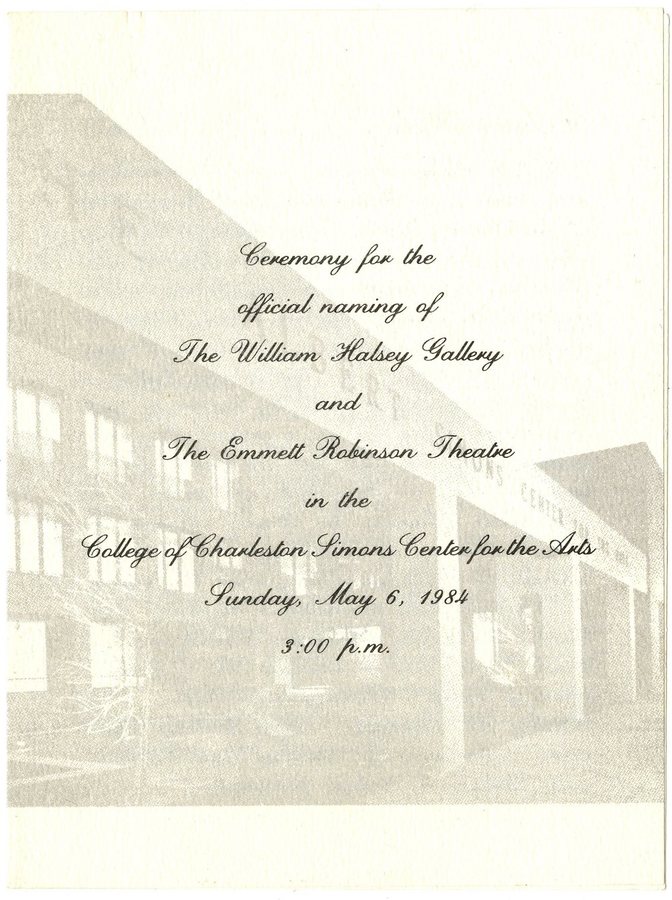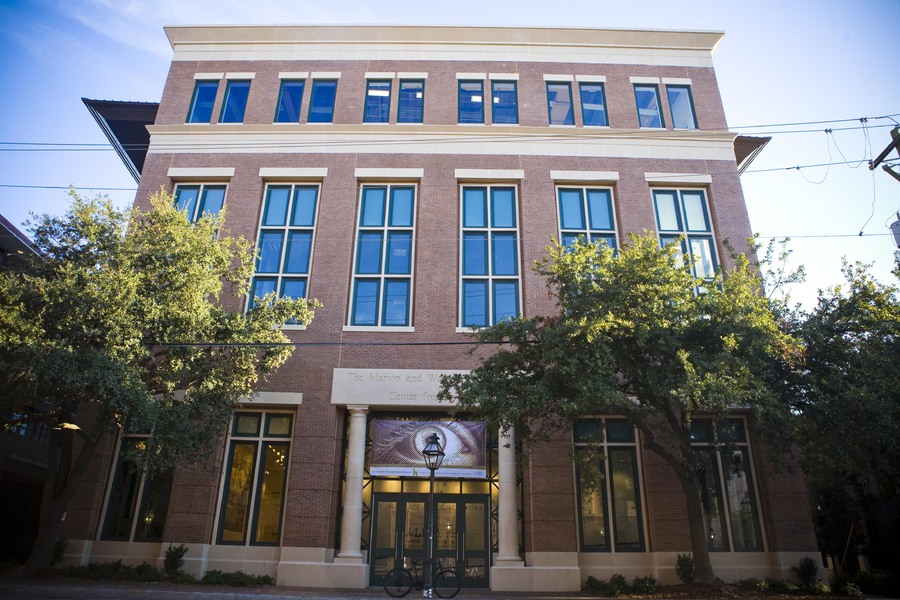
Forming the nucleus of the College of Charleston’s School of the Arts, the Simons Center for the Arts and The Marion and Wayland H. Cato Jr. Center for the Arts, house art studios, galleries and performance spaces that serve as an integral part of Charleston’s thriving arts community.
Since 1979, the College of Charleston’s Albert Simons Center for the Arts has occupied a long site on the east side of St. Philip Street, its center courtyard facing Green Way. In late 2009, the arts center was expanded with the completion of The Marion and Wayland H. Cato Jr. Center for the Arts on the southeast corner of Calhoun and St. Philip streets.
The prominent Charleston architectural firm Lucas and Stubbs (Frank E. Lucas and Sidney Stubbs) designed the four-story, 85,000 square-foot building as a fine arts center for a 5,000-student college. Project architect Thompson Penney described the red-brick building as a backdrop to the central sunken courtyard, which was intended to be “the heart of the arts center” on line with Green Street. Here would be outdoor exhibits and ceremonies, a meeting place and a gathering area outside the building’s lobby, theatre and recital hall. Two-story wings extending north and south from the courtyard were intended to respect the traditional heights of the residential neighborhood, while the upper floors that provided space for classrooms, offices, and studios were set back toward the interior of the block. Construction began in January of 1977 and was completed by July 1979.
A campus fine arts center had been proposed as early as 1971, when the College renovated two houses on campus, 72 and 74 George Street. These would accommodate the music and arts departments until a completely new fine arts center was built. By the time the cornerstone was laid in 1977, the building had been named the Albert Simons Center for the Arts. Simons, then 88 years old, was known as the “Dean of Charleston Architects.” He had begun his long association with the College of Charleston in 1906. After a year of undergraduate studies in his hometown, Simons went on to the University of Pennsylvania where he earned bachelor’s and master’s degrees in architecture. Working professionally as an architect, he was also a member of Charleston’s first Board of Architectural Review, a founding member of the Preservation Society of Charleston and an instructor at the College of Charleston from 1924 until 1948. The first Art History course at the college, taught by Simons, was the seed for the School of the Arts. He praised the design of the center in 1977, saying, “if you study the buildings of Charleston you’ll find four or five distinct periods, and now we have a sixth – the contemporary.”
The Simons Center has been an integral part of Charleston’s artistic life since its construction. Not only are the theatre and recital hall used for student performances, they annually serve as venues for Spoleto Festival USA. In 1984, the theatre and art gallery were named to honor two Charleston artists: the Emmett Robinson Theatre and the William M. Halsey Gallery. Robinson was professor emeritus of theatre and drama, and Halsey taught the first studio arts program at the College.
The School of the Arts has grown along with the College of Charleston. The Marion and Wayland H. Cato Jr. Center for the Arts, between the original Simons Center and Calhoun Street, opened in 2010. Along with a new home for the art gallery, now known as the Halsey Institute of Contemporary Art, the Cato Center provides offices and studios on its upper floors. The design of the Cato Center is much more traditional than the Simons Center, and during an upcoming renovation project, the School of the Arts will consider modifications to the 1970s building with a design that complements not only the 21st century Cato Center, but also the 19th century college campus.
Prior to the construction of the Simons Center, the streetscape along the east side of St. Philip Street south from Calhoun Street was occupied by more than a dozen private properties with stories of their own.
Audio
Images

